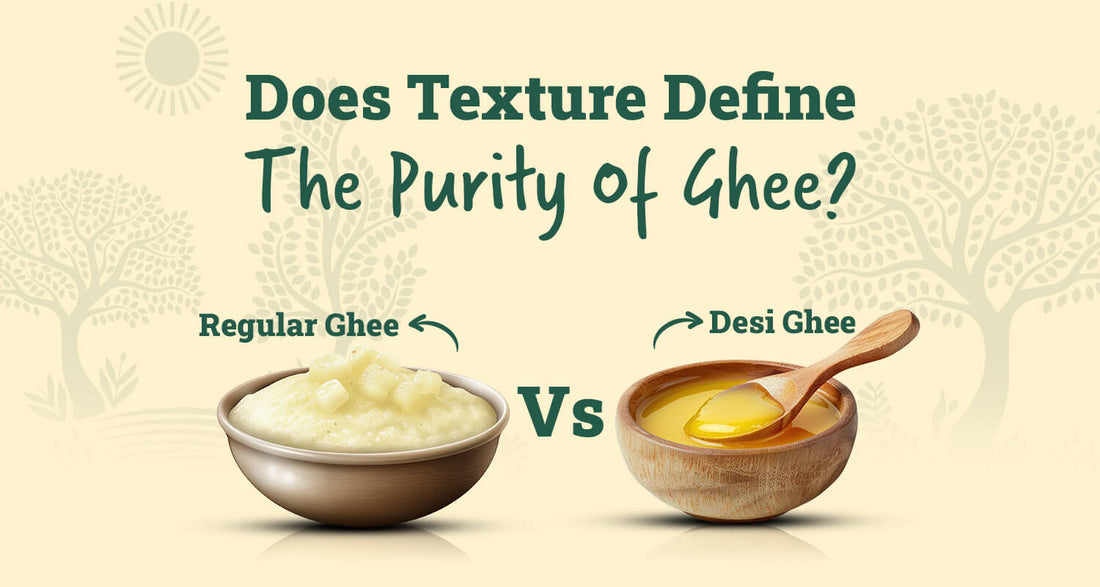
The Tale Of Texture While Choosing The Right Ghee
Share
Danedaar ghee, peela ghee, dadi wala ghee—these terms evoke the richness of memories and flavours associated with this golden elixir. Ghee is not just a singular entity; it embodies various forms and textures, each telling its own story. But what causes these variations? Let's delve into the factors that influence ghee's diverse textures.
Factors Influencing Ghee's Texture
- Temperature Variations:
- Warm Environments (Above 30°C/86°F): Ghee remains in a liquid state, making it easy to pour over your favorite dishes.
- Moderate Temperatures (18-22°C/64-72°F): Ghee transitions to a semi-solid form with a grainy consistency, often cherished in traditional preparations.
- Cool Conditions (Below 18°C/64°F): Ghee solidifies completely, adopting a firm, waxy texture.
- Fat Composition and Crystallization:
- Ghee comprises a blend of saturated and unsaturated fats, each with distinct melting points. As ghee cools, these fats crystallize at varying rates, leading to textures ranging from smooth to grainy. The presence of fatty acids like palmitic and stearic acids can result in larger granules during the cooling process.
- Production Techniques:
- Traditional Methods: Processes such as the bilona method, which involves churning curd to extract butter before clarifying it into ghee, often result in a more pronounced granular texture.
- Industrial Methods: Modern production techniques may yield a smoother ghee due to different processing and cooling methods.
Interpreting Ghee's Texture
The texture of ghee is a natural outcome of its composition and the conditions under which it's produced and stored. Variations in texture do not necessarily indicate a difference in quality.
- Granular Ghee: Often associated with traditional preparation methods, a grainy texture can be a sign of minimal processing and natural cooling.
- Smooth Ghee: A smoother consistency may result from rapid cooling or specific production techniques.
- Liquid Ghee: Common in warmer climates, liquid ghee is convenient for pouring and mixing into dishes.
Tips for Managing Ghee's Consistency
If you have a preference for a particular ghee texture, consider the following:
- For a Grainy Texture:
- Store ghee at moderate room temperatures (18-22°C/64-72°F).
- Allow ghee to cool slowly after melting to encourage granule formation.
- For a Smooth or Liquid Texture:
- Keep ghee in a warmer part of your kitchen.
- Avoid refrigeration, as it can cause the ghee to harden.
- If ghee solidifies, gently warm it by placing the container in warm water or briefly heating it in a pan.
In conclusion, the varying textures of ghee are natural and influenced by factors such as temperature, fat composition, and production methods. These variations do not compromise its flavor, nutritional value, or quality. Embrace ghee in all its forms and enjoy the richness it brings to your culinary creations.
At Anveshan, we pride ourselves on crafting ghee using traditional methods, ensuring purity and authenticity in every jar.











 You saved ₹-48 on this order
You saved ₹-48 on this order